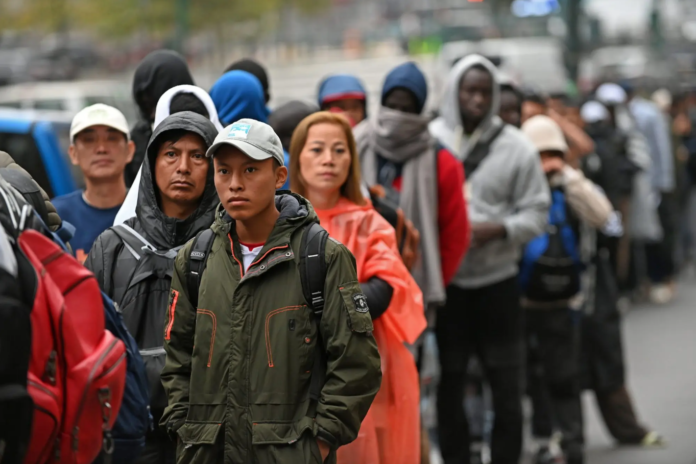In the bustling streets of New York City, a new narrative unfolds – one that starkly contrasts the city’s famed reputation as a melting pot of cultures and a beacon of hope. Since the spring of 2022, over 150,000 migrants have arrived in the city, catapulting it into the center of a deepening migrant crisis. This influx has sparked widespread protests across boroughs, from Staten Island to Queens, and has become a convenient tool for conservative rhetoric.
Mayor Eric Adams, in a controversial move, has threatened the city’s long-standing principle of providing shelter to those in need. His drastic statement that this crisis could “destroy” New York reflects a sharp turn in policy. Adams even made trips to Latin America, in an attempt to dissuade potential asylum seekers from heading to New York.
I remember standing outside the Roosevelt Hotel, now the city’s main asylum intake center and ironically nicknamed the “new Ellis Island.” There, I saw the tangible effects of this policy shift – families seeking asylum trapped in a tug-of-war between New York’s historic promise of shelter and a rising tide of politically-fueled rhetoric that pits established residents against these new arrivals.
This week, a revealing report by the New York Times shed light on the city’s haphazard response to this humanitarian challenge. Reporters Andy Newman and Dana Rubinstein highlighted glaring oversights: the city’s failure to assist migrants in transitioning out of shelters, the delayed assistance in filing asylum claims which potentially denied legal employment to thousands, and costly emergency contracts, some with contractors accused of migrant mistreatment.
The financial mismanagement is startling. The city reportedly spent nearly double per migrant “household” than it allocates for homeless families – almost $400 a day compared to $188. Despite growing costs, there was a noticeable lack of initiative to expedite the process of moving migrants out of shelters.
Through interviews with city officials, migrants, and advocates, a picture of negligence and inefficiency emerges. The Adams administration’s response was marked by a series of “avoidable mistakes” – from excessive spending on the shelter to a lack of basic case management to understand the migrants’ immigration status or family connections within the city.
What we see here is not just a failure of policy but a betrayal of New York City’s ethos. The city, once celebrated for its welcoming spirit and diverse fabric, now grapples with a crisis mismanaged and mishandled. This isn’t just a logistical failure; it’s a moral one, reflecting a city struggling to uphold its values in the face of unprecedented challenges. It’s high time for NYC to rediscover its compass, to navigate this crisis not just with efficiency but with the empathy and inclusivity that has always been its hallmark.



